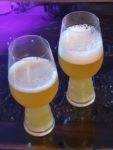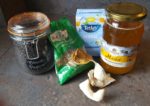Do you want to brew consistently good beer? You need some books, not more equipment. And to help you out, here’s a list of what I consider the best beer brewing books for every stage of your homebrewing development.
Don’t get me wrong; there are tons of superb resources online. You’ve got forums, small blogs like this one, and some hu-uge sites like BYO where you can find recipes, tips, guides, etc.
But a good book will last you a lifetime, and you will find yourself going back to the very best ones for years to come. They’ll proudly bear the splashes of wort, like battle scars. They’ll have corners of pages folded into dog-ears at your most revisited sections.
Who knows, when fellow brewers see your bookshelf, they may even marvel at your impeccable taste.
There are a ton of blog posts telling you which are the best beer brewing books. So how to know which ones are a must-have, which ones are a nice-to-have, and which ones you probably won’t use?
The Best Beer Brewing Book for Beginners: The Complete Joy of Homebrewing, by Charlie Papazian

No reading list is complete without this. If you are a beginner wanting to progress from buying beer kits into creating beers you can be proud of, this is for you.
The enthusiasm is truly infectious, and the writer’s laidback attitude of ″Relax. Don’t worry. Have a homebrew‶ has converted countless readers into passionate brewers.
Is this book right for you? If you’re relatively new to brewing, yes. If you’ve already dipped your toes into All-Grain brewing and you aren’t interested in using malt extracts, it might not be the right book for you. Unlike the next item on the list, this probably isn’t a book you’ll dip into for years. Nonetheless, it is an excellent initiation into homebrewing. (I believe it is also the world’s best-selling homebrew book.)
How to Brew, by John Palmer. A resource for life.
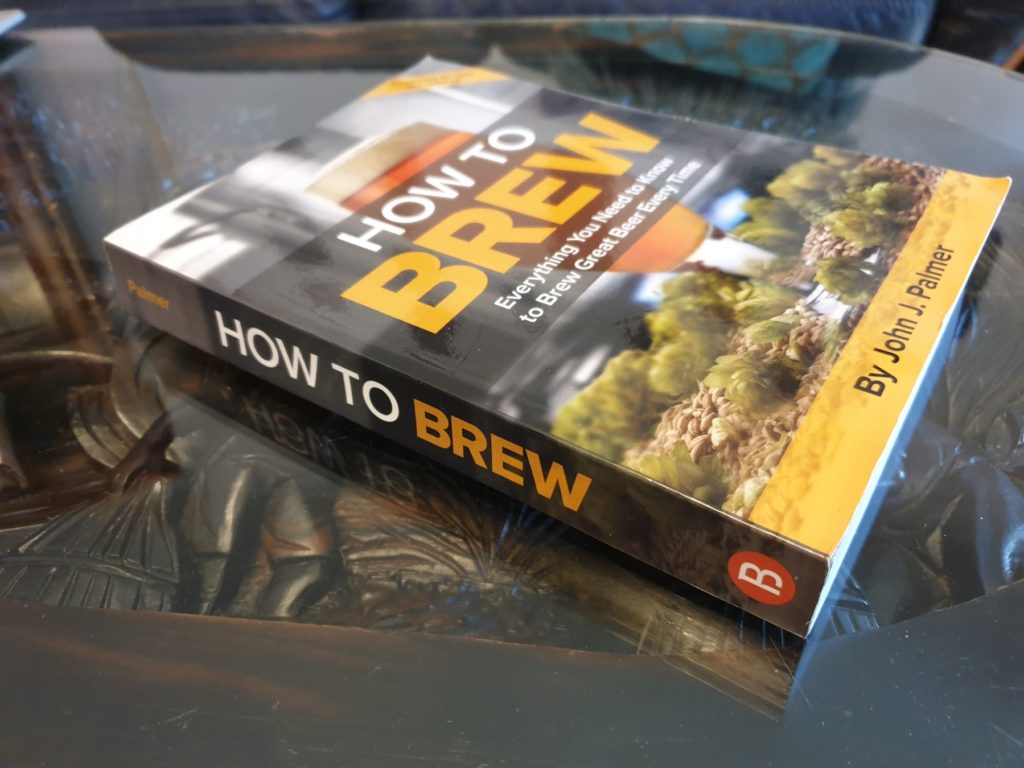
For many, this is a homebrewing bible. Indeed, it appears on literally every list of beer brewing books. You don’t even need to buy it since it’s available as a free resource online. But, again, to anyone with a fully functional soul, a well-thumbed book is preferable.
Palmer will take you from an absolute beginner to a surprisingly advanced stage. He’ll teach you to make your first batch of beer using malt extract. But later he’ll take you through the more technical brewing science you need to get to grips with if you want to make great beer. This is a book you’ll grow into.
What you get:
A practical guide to virtually every aspect of homebrewing. Sanitisation. Building your own equipment (should you so choose). Ingredients. Yeast management. Water chemistry. A selection of extract and all-grain recipes for ales and lagers. Plus, a trouble-shooting section covering all the main issues.
Coming in at nearly 600 pages, you can choose to see How to Brew as daunting, or (more correctly) as a complete resource you’ll come back to again and again.
For trouble-shooting, CAMRA’s Homebrewing Problem Solver by Erik Lars Myers
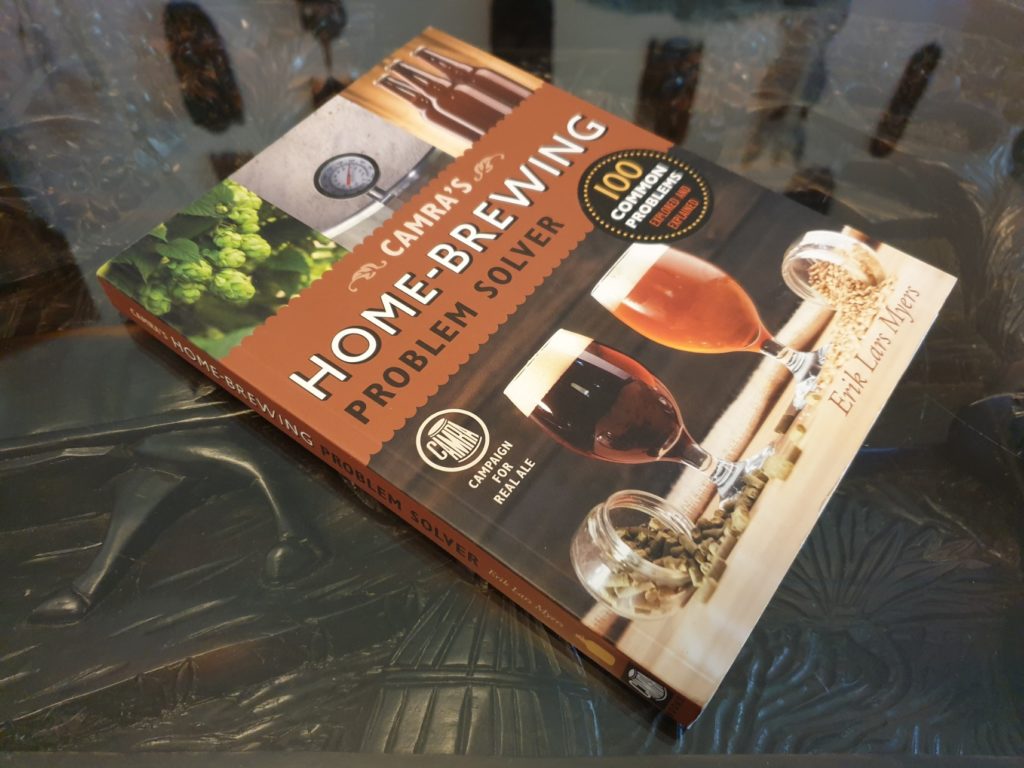
Sadly, the time will come when you brew a beer, and it didn’t turn out quite how you hoped.
For me, my heart breaks a little when I brew a beer, and once I pour it, the foam disappears almost immediately.
Or if I brew a pilsner, and instead of that classic crisp pilsner taste, there are notes of corn.
Without a book like this, you will be searching on Google or asking questions on forums.
This book makes it child-play to figure out where you went wrong. If you’re anything like me, you’ll use it a lot.
This problem-solver goes through all the likely misfortunes – flat beer, “off” smells and tastes, poor foam retention, unwanted haziness – and explains what, if anything, you can do to fix your brew, and if not, what you can do differently next time.
For recipes, Brewing Classic Styles: 80 Winning Recipes Anyone Can Brew by Jamil Zainasheff & John Palmer
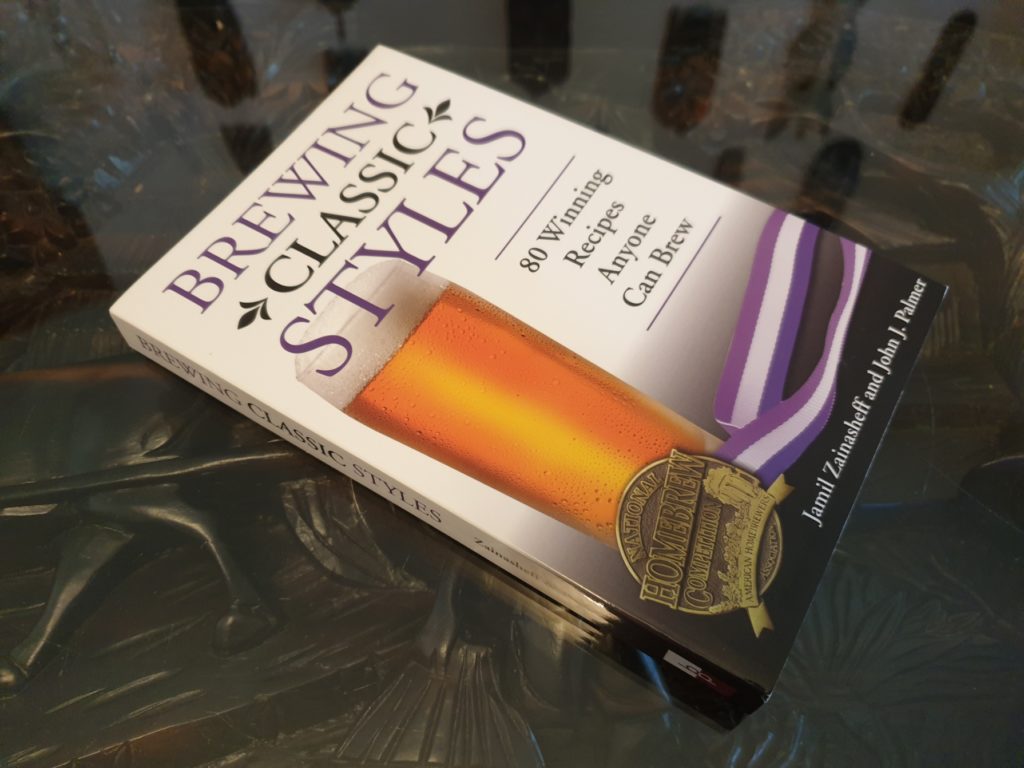
The internet is chock-full of homebrewing recipes – why on Earth would you buy a book of them?
Well, partly because books are lovely. But also because this book contains 80 award-winning recipes across all categories.
If you want to up your brewing game, you won’t go far wrong by learning a decent cross-section of styles.
Jamil Zainasheff has experienced massive success at a competition level, producing winning beers in many categories. So he’s the perfect writer to take you by the hand and teach you to brew these styles.
To be clear, these recipes are primarily for extract brewing, although there are all-grain versions of each recipe. Also, beware the acronyms – brewing uses many of them, and this book doesn’t explain the more basic ones. Much of this book is still suitable for newbies, but you may need Google the occasional term.
Right at the beginning, there’s a table to show which styles are the easiest, and which are the most advanced.
From there, you’ll get taken through the gamut of styles from the more ubiquitous to the more obscure.
Designing Great Beers: The Ultimate Guide to Brewing Classic Beer Styles by Ray Daniels
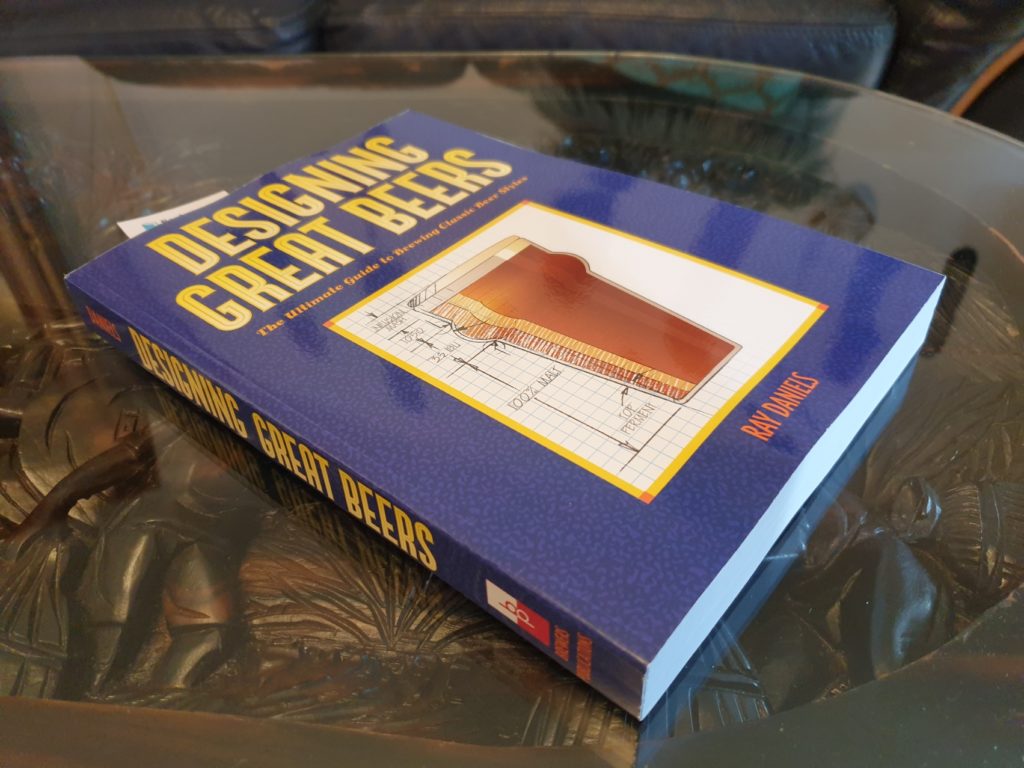
As the title says, this is a book for you if you want to get into designing your beers. Now, some homebrewers aren’t the slightest bit interested in creating their own recipes. After all, enough brewers are coming up with new recipes that you’ll never have to make the same beer twice if you don’t want to. The previous book in the list gives you more than enough recipes to keep you going for a couple of years.
For this reason, Designing Great Beers is not for everyone. But if brewing up clone recipes of your fave beers no longer floats your boat, or if you want to get an idea why and how brewers chose their ingredients, this book will be invaluable.
A couple of caveats – the book was written a while back. An abundance of new hop varieties has since been conjured up. There are new types of malt available that were not available back in the day. Also, I don’t know why this should be, but Belgian beer styles are criminally overlooked, at least in my edition. Don’t let these complaints put you off.
So how will this book help you?
Ray Daniels (founder of the Cicerone Certification Program, which has trained thousands of beer sommeliers, brewers, and servers) goes methodically through each beer style and analyses the recipe from each competition entry that got through to at least the second round.
By doing so, he’s able to tell you roughly what percentage of each malt to add to your mash, which yeast you might choose, and which hops to use. You don’t need to follow this religiously when creating your own recipes, but it will help you make a recipe that falls within competition guidelines and, most importantly, a recipe that works.
To cover the omission of Belgian beers in Designing Great Beers, I would recommend the following two books:
Brew Like a Monk by Stan Hieronymus, and Farmhouse Ales: Culture & Craftsmanship in the Belgian Tradition by Phil Markowski.
Brew Like a Monk, rather obviously, goes in-depth into the acclaimed Belgian Abbey beers. These are the most well-known styles; however, I felt missing out on Farmhouse Ales would be a travesty. (The first beer I ever tried that truly knocked my socks off was a Farmhouse Ale.) If you’re not bothered about rustic beers, you could easily live without the second book, although I‘ll probably avoid you.
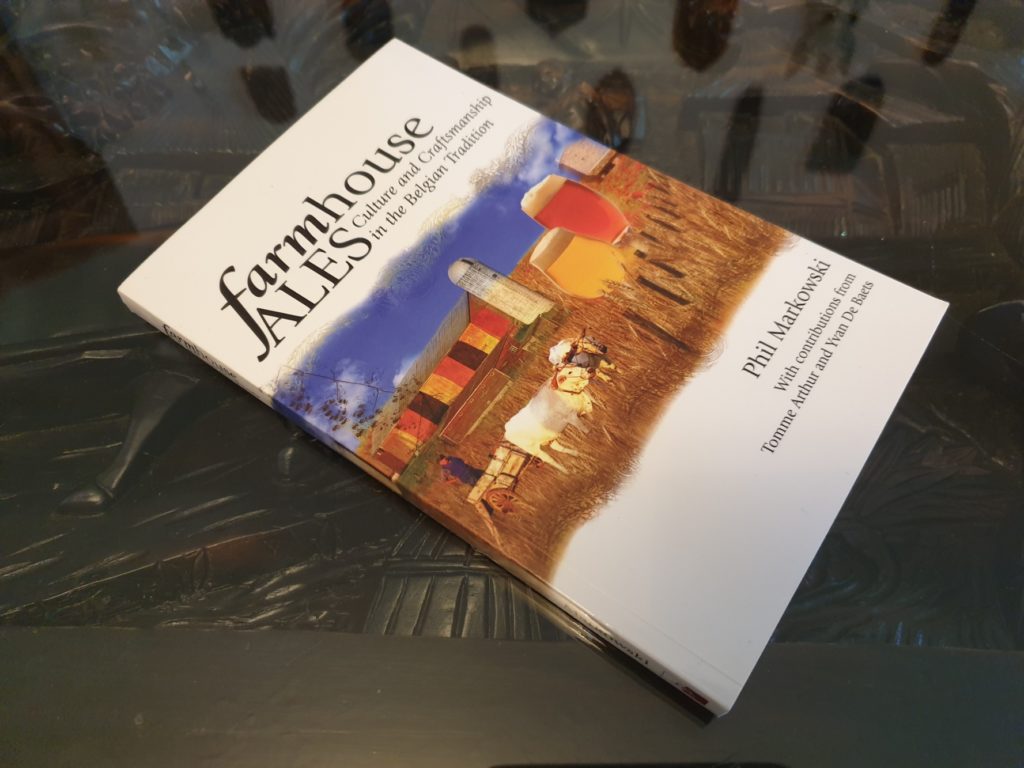
Honorable Mention:
Your brewing won’t get far if you don’t take the time to sample the splendid beers already available around the globe. For this reason, although it’s not a beer brewing guide at all, I include The New World Guide to Beer by the very influential Michael Jackson. Not the singer, obviously. Ray Daniels (author of one of the books in this list) described Michael Jackson as “quite simply, the foundation upon which modern craft beer is built.”

Beer brewing books won’t teach you to appreciate good beer; the only thing that will do that is drinking it, and there are few better resources to let you know what’s worth drinking.
Also definitely worth a look if you want to dig deep into ingredients:
- For The Love of Hops: The Practical Guide to Aroma, Bitterness and the Culture of Hops by Stan Hieronymus
- Yeast: The Practical Guide to Beer Fermentation by Chris White & Jamil Zainasheff
- Malt: A Practical Guide from Field to Brewhouse by John Mallet
- Water: A Comprehensive Guide for Brewers by John Palmer & Colin Kaminski
Together, these four books form the Brewing Elements series, and quite frankly, nothing else goes into this depth. Whether you are ready for this amount of detail is another matter. Personally, I only absorbed a tiny fraction of what is in these. (Over 300 pages on water for brewing and water chemistry is a lot!) But they are pretty fascinating, a lot less dry than you might imagine, and could potentially take you to an extremely high level of expertise.
I hope you found this list of the best beer brewing books helpful, and I particularly hope you found useful my explanation of where in your brewing development each book belongs. Please do share it if you feel that your fellow homebrewers may benefit from it.

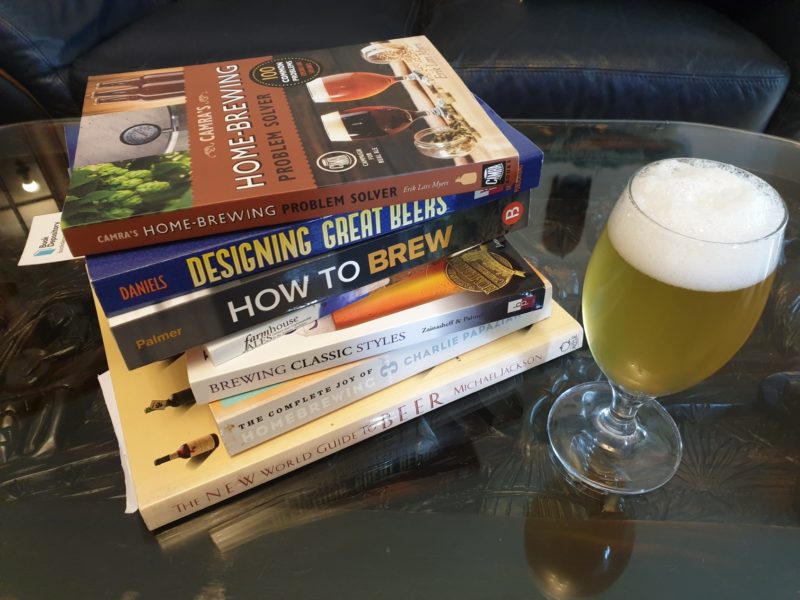
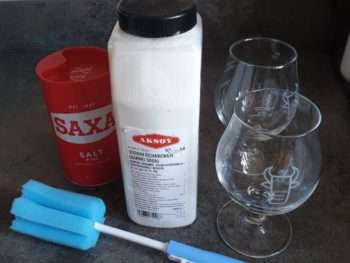
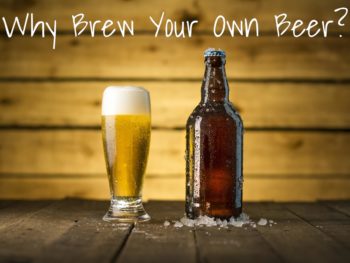

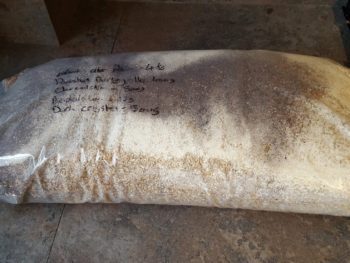

 Hoegaarden Grand Cru Recipe (Clone)
Hoegaarden Grand Cru Recipe (Clone)

